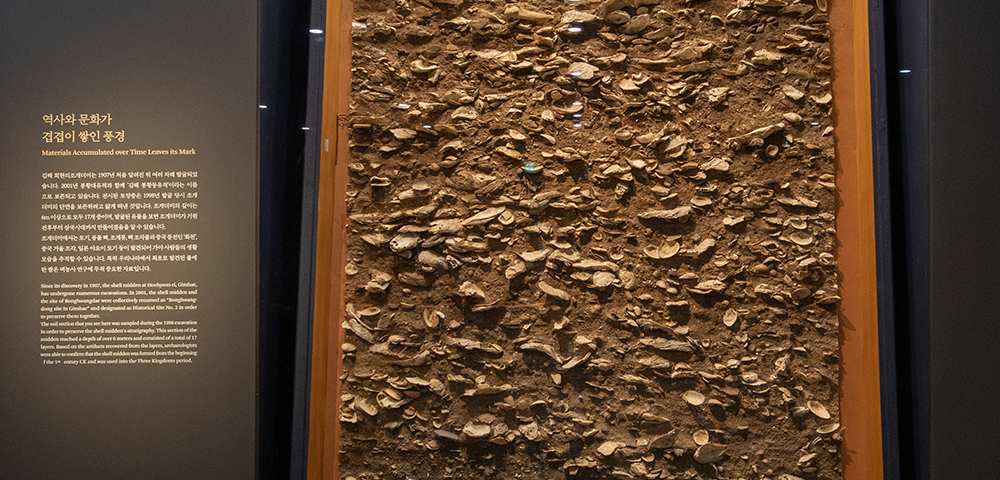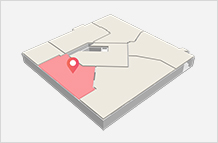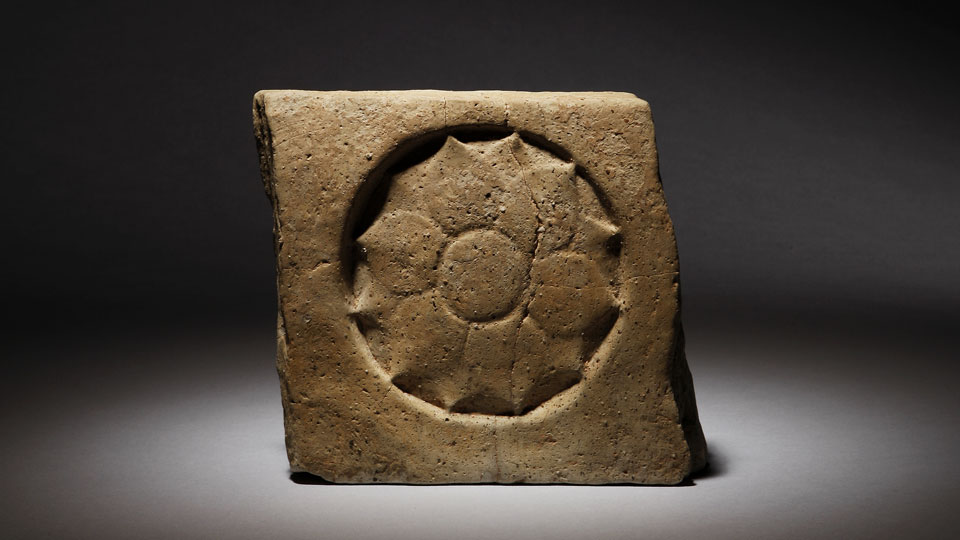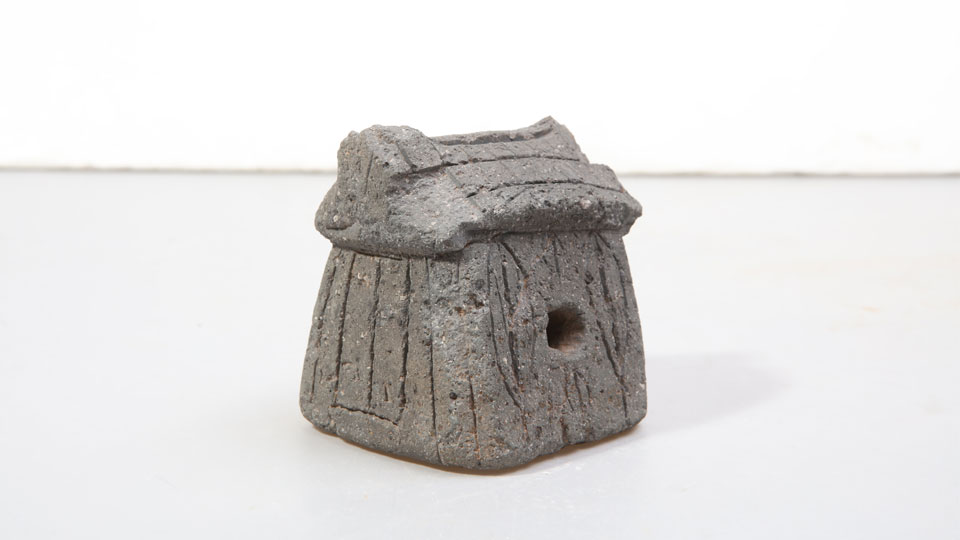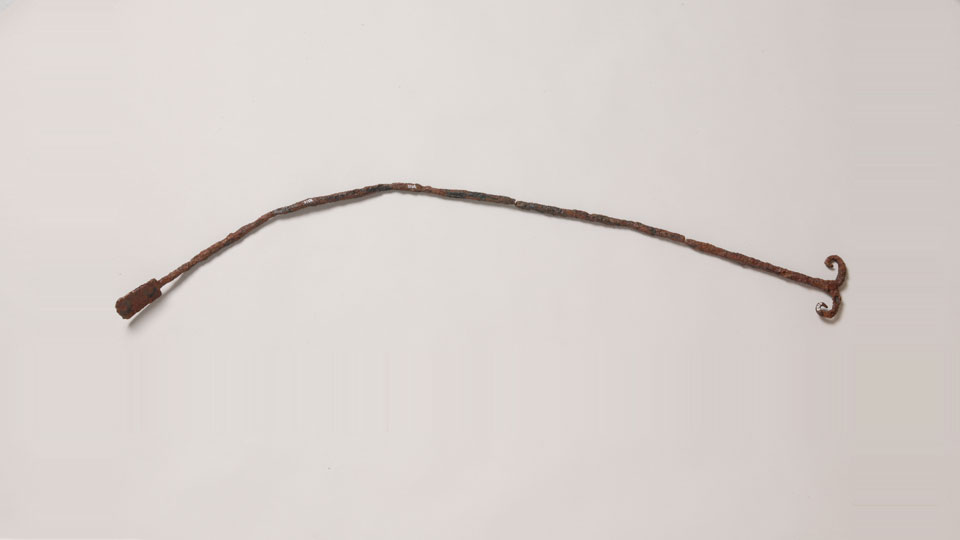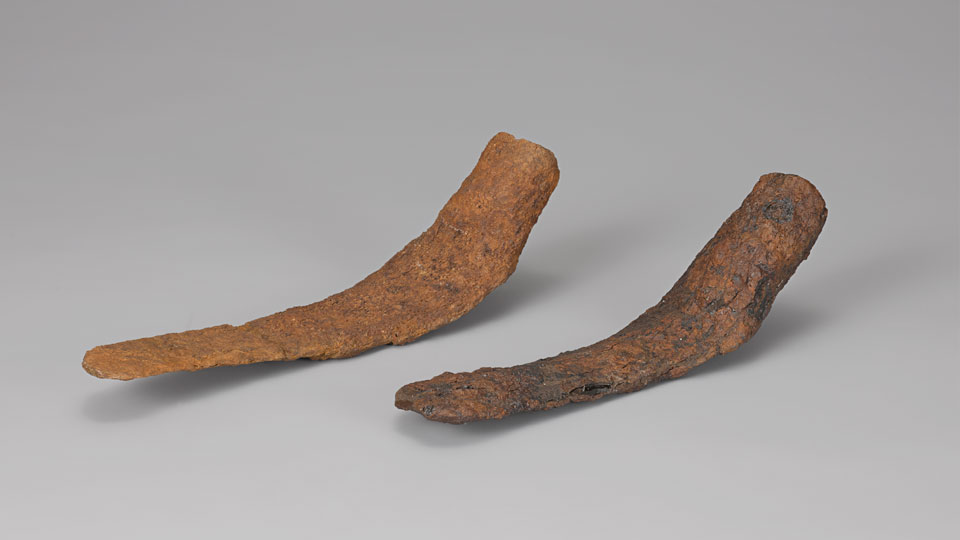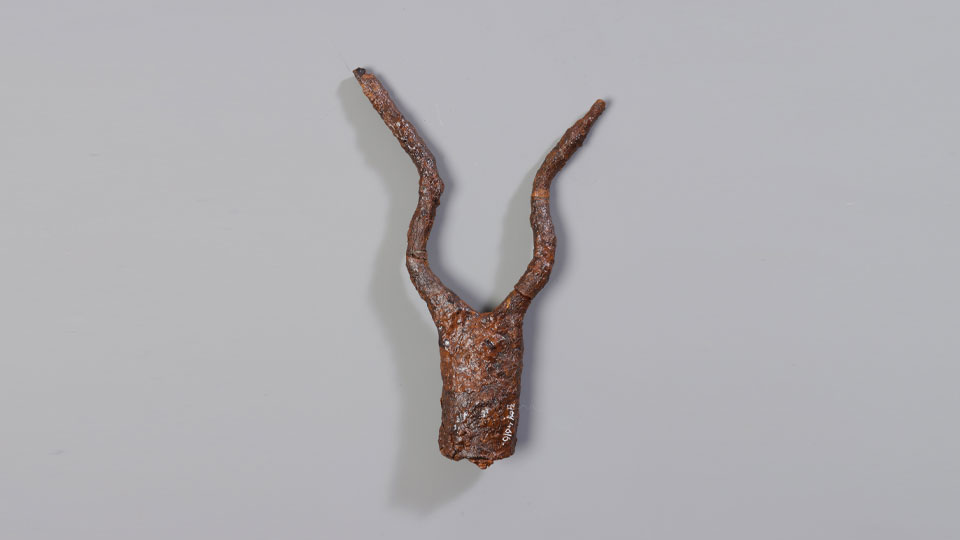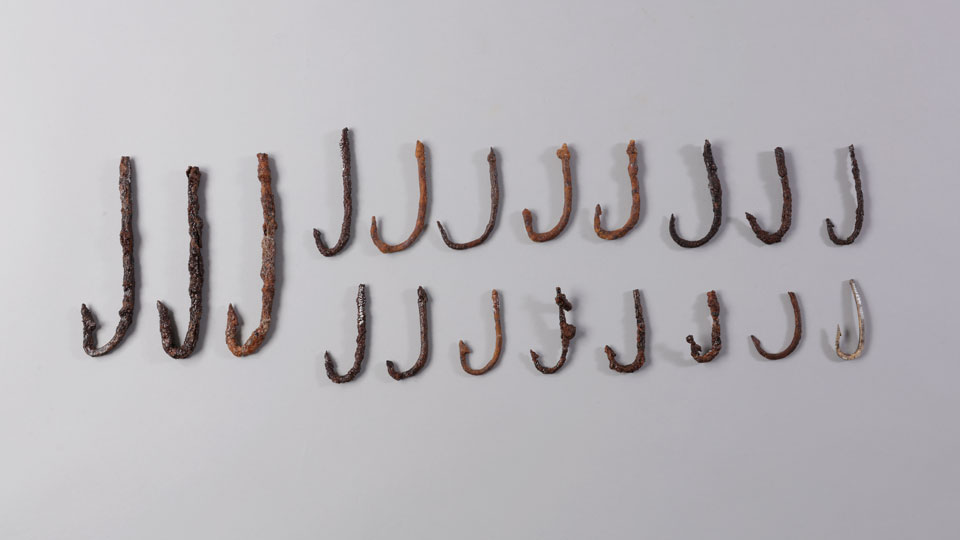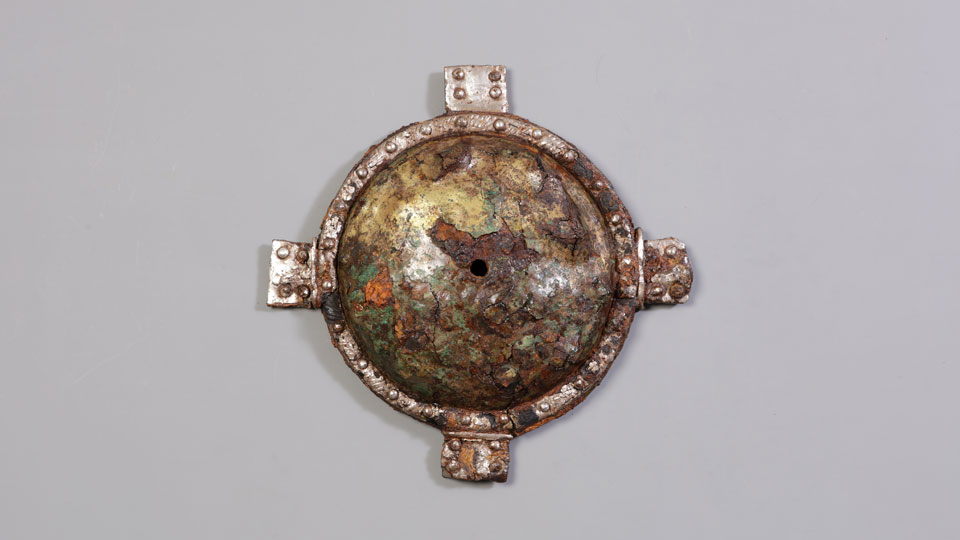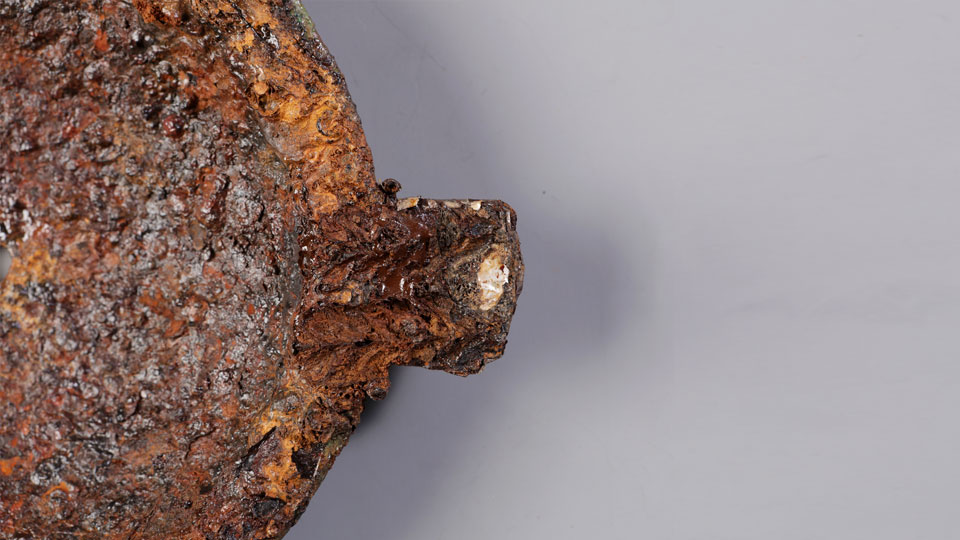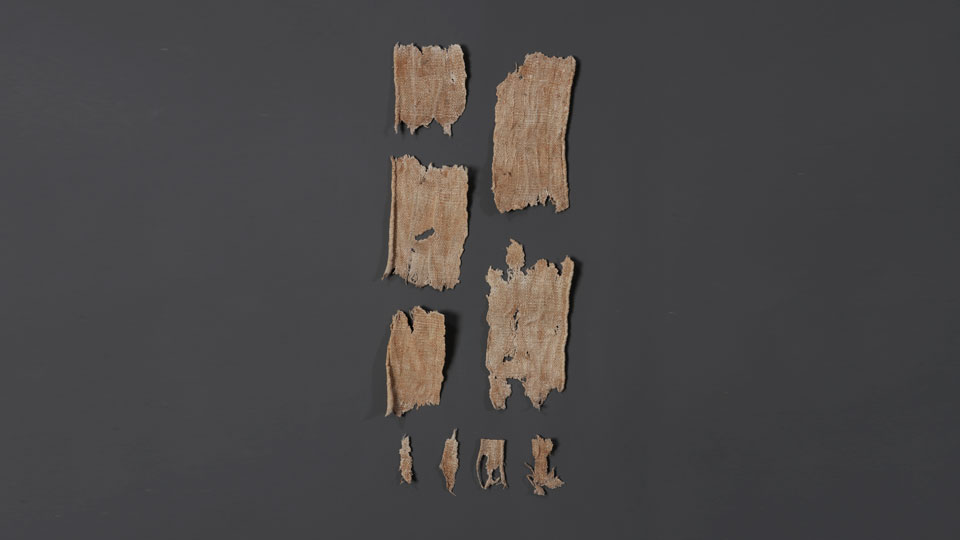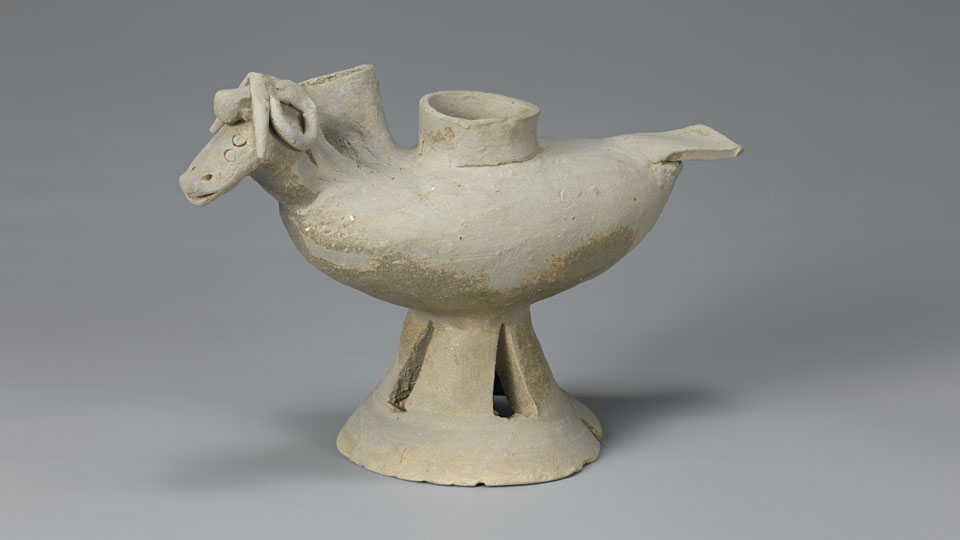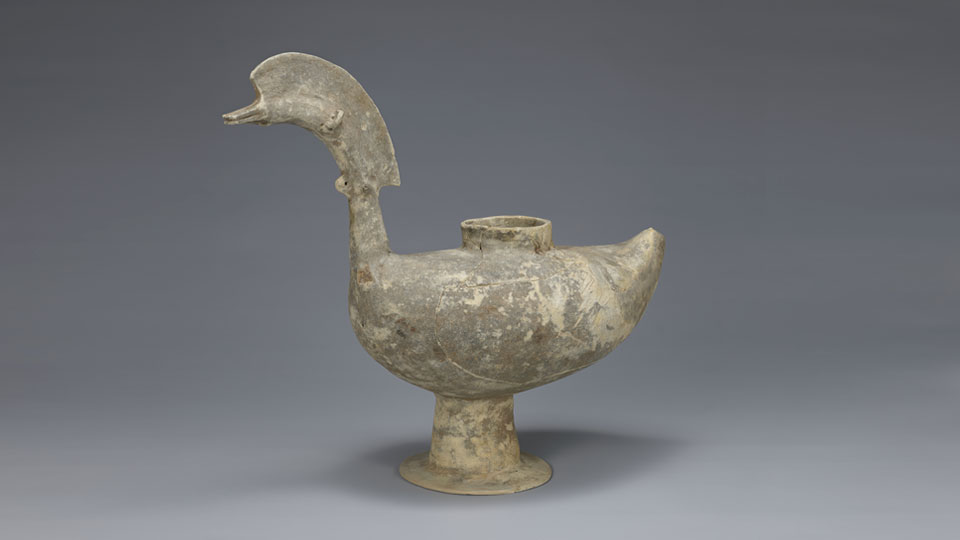The Lives of Gaya People
The people of Gaya lived in huts, thatched-roof houses, or even two-story houses with attics. Their dietary substance came mainly from farming dry fields and wet rice paddies, and their dwellings featured cooking stoves. Food steamers and portable cooking stoves have also been found at many settlement sites. Fishing and shellfish gathering were also practiced in order to gain food resources. The remains of marine fish and shellfish have been discovered not only at the shell middens of Bonghwang-dong (previously named Hoehyun-ri) and Buwon-dong, in Gimhae, but also at inland sites in Goryeong, indicating the active nature of exchange that took place along Nakdong River.
The people of Gaya moreover carried out rituals in order to pray for bounty and well-being, and also practiced divination. Their customs included skull-flattening and tooth-extraction, which may appear alien from a contemporary perspective. These practices may have been a form of beauty enhancement or a harsh rite-of-passage that all adults had to experience.
- Section 29Gaya’s Capital and Palace Revealed
- Section 29Gaya’s Capital and Palace Revealed
- Section 30Sowing the Land and Harvesting Crops
- Section 31Catching Fish and Gathering Shellfish
- Section 32Weaving Cloth
- Section 33Understanding the Lives of the Gaya People Through Shell Middens
- Section 34Imbued with Fervent Wishes
- Section 35Guiding the Souls of the Deceased
- Section 36Materials Accumulated Over Time Leaves its Mark
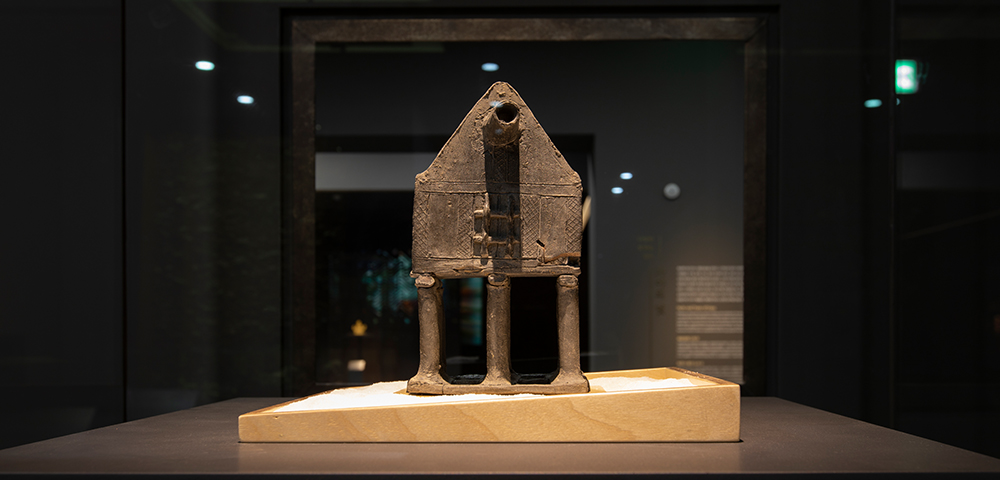
Archaeological investigations have aided in the gradual reveal of Gaya’s capital and palace features. Bonghwangtoseong Earthen Wall Fortress has played an important role in providing information on the structure of Gewumgwan Gaya’s capital and palace. The ways in which large buildings and pillar structures, identified both inside and outside the fortress, as well as earthen fortress walls, ditch features, ceremonial spaces and harbor facilities were built up over time can be observed at the site. In Geumgwan Gaya, the realm of the living (represented by Bonghwangdae) and the realm of the dead (represented by burial grounds around Daeseong-dong) were kept apart, spatially, but still interconnected.
Dae Gaya’s capital fortress is believed to have been situated upon Jusan Mountain, which sits along the western edge of Goryeong, and its capital city is located below, upon a terraced hillside. The Jisan-dong burial ground, Dae Gaya’s royal cemetery, is located below the summit of Jusan Mountain, which offers a bird’s eye view of all of Goryeong.
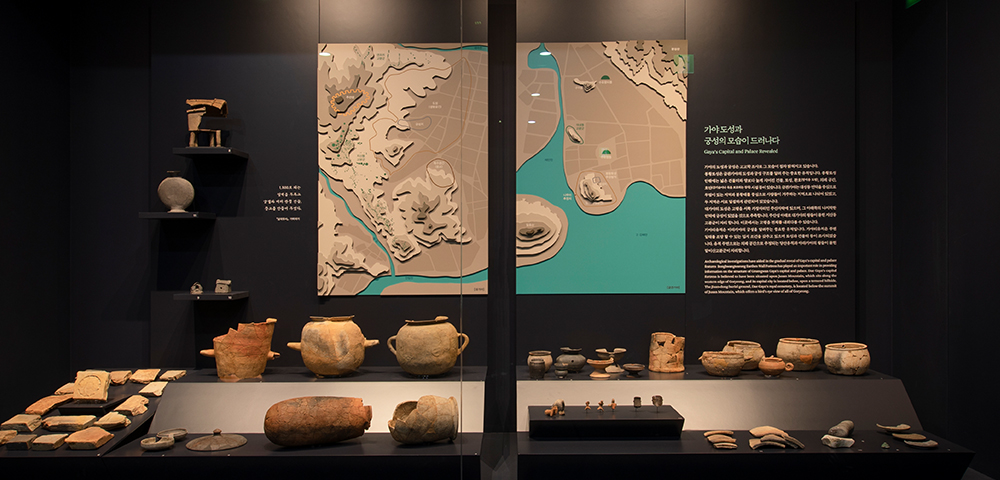
-
Lotus Design Brick Songnim-ri, Goryeong,
Length: 14.5cm -
House-shaped Porttery Sopo-ri, Haman,
Height: 7.3cm -
House-shaped Porttery Seok-dong, Changwon,
Height: 17.6cm
The introduction of iron culture into the southern region of the Korean Peninsula took place at a relatively later date, compared to the northern region. Consequently, the use of iron farming tools in the southern region became delayed. Nevertheless, due to the abundant iron resources and superior production technology of the southern region, iron culture developed rapidly and soon iron versions of key farming tools, such as axes, plowshares, hoes, scythes, etc., came to be used. In some cases, the wooden handles of these farming tools have been preserved, making it possible to infer how they would have been affixed to the iron parts.
With the adoption of new farming techniques, new types of farming tools, such as U-shaped shovels, rakes, homi hand plows and spades for irrigation work, made an appearance. The wide-spread use of iron farming tools increased farming productivity. As a result, these iron farming tools came to be imbued with special meaning. Miniature figurines of iron farming tools have been found placed in Dae Gaya tombs.
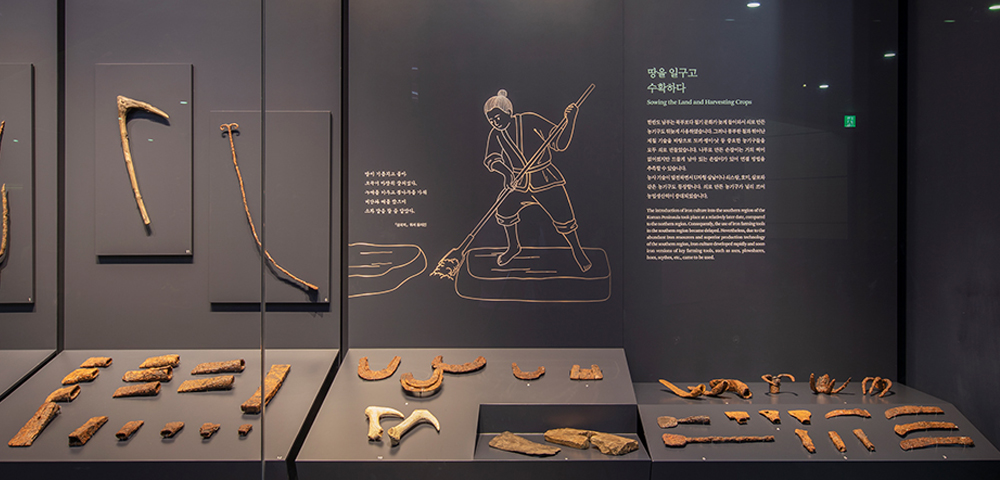
-
Iron Spade for Irrigation Work Gaeumjeong-dong, Changwon,
Length: 77.0cm -
Iron Sickles Daeseong-dong, Gimhae ∙ Gaeumjeong-dong, Changwon,
Length: 30.0cm (upper) -
Iron Plows Hasamjeong, Ulsan ∙ Bonghwang-dong, Gimhae,
Length: 23.9cm (upper)
The people of Gaya also obtained food from the rivers or the seas. Various tools were needed to catch fish, gather sea plants, and dig shellfish. The harpoons and fish hooks of varying size that have been recovered from the Daesong-dong burial ground and surrounding shell middens are key examples of such tools. The discovery of fish-net sinkers indicates that fish-nets were used. Iron tools that were used to gather and prepare shellfish and sea plants found in mudflats, shallow reefs, and rocky coastal shores have also been discovered.
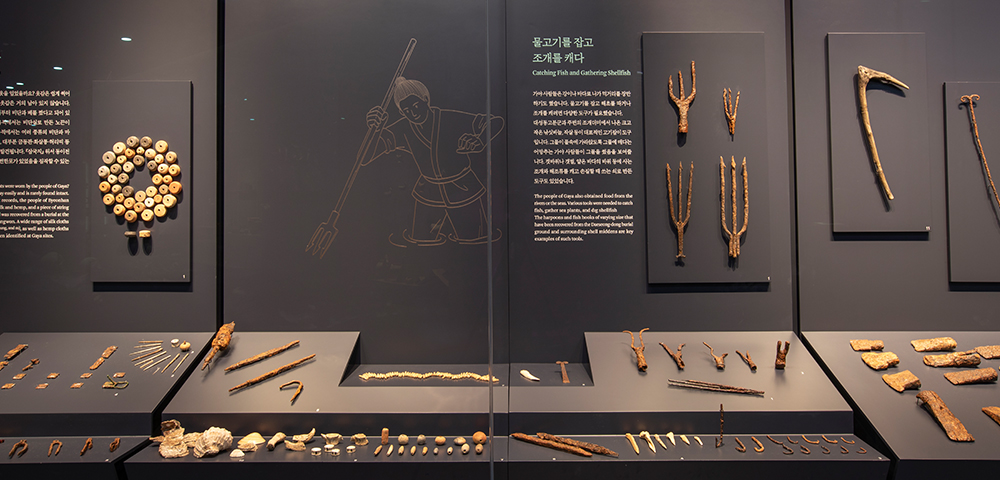
-
Three Pronged Spear Gyeseong, Changnyeong,
Length: 38.2cm -
Pronged Spear Guji-ro, Gimhae,
Length: 13.1cm -
Iron Fishhooks Bangji-ri, Sacheon,
Length: 13.1cm
What kinds of garments were worn by the people of Gaya? Cloth tends to rot away easily and is rarely found intact. According to ancient records, the people of Byeonhan knew how to weave silk and hemp, and a piece of string made with silk thread was recovered from a burial at the site of Daho-ri, in Changwon. A wide range of silk cloths (known as gyun (絹), cho (蕉), neung (綾), and ra (虆)), as well as hemp cloths (daema (大麻), jeoma (苧麻)), have been identified at Gaya sites. They have mostly been found attached to metal artifacts, such as gilt-bronze crowns, arrow quivers, and belt ornaments. The existence of Byeonhan hemp cloth can be inferred from the historical account of Yeomsachi that appears in Sanguozhi Weishu Dongyizhuan (Records of the Three Kingdoms, Book of Wei, Biography of the Eastern Barbarians), which recounts how Jinhan had to provide 15,000 Jinhan people and 15,000 rolls of hemp cloth made in Jinhan as payment for the lives of approximately 500 Chinese people who they had taken as slaves. Given that rolls of cloth were used in his way as a form of money in pre-modern society, they are also likely to have been an important trade item, as well as a means of wealth accumulation.
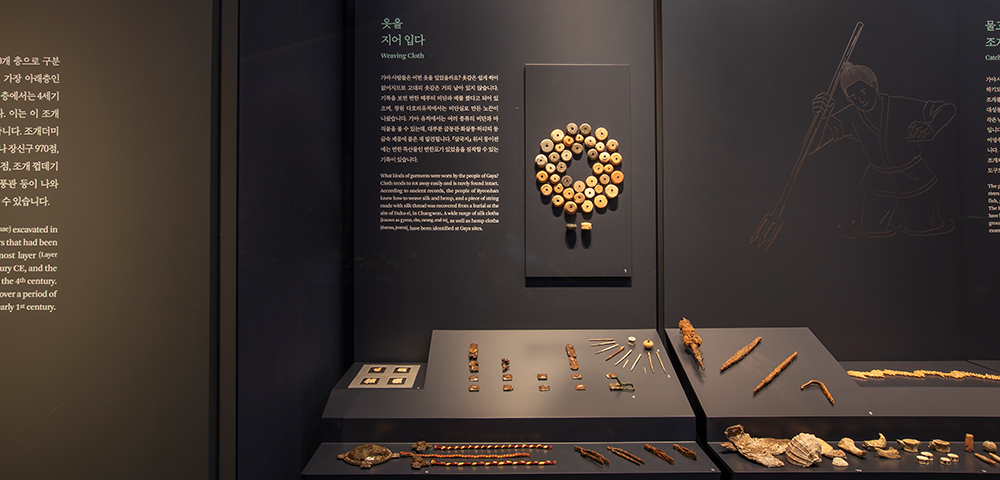
-
Harness Fitting Jisan-dong, Goryeong,
Length: 17.8cm -
Harness Fitting Jisan-dong, Goryeong,
Length: 17.8cm -
Hemp Cloth Yangdong-ri, Gimhae,
Length: 6.0cm
The section of Hoehyun-ri shell midden (Gimhae) excavated in 2005 was found to consist to 100 cultural layers that had been accumulated over four phases. The bottommost layer (Layer 100) yielded pottery dating to the early 1st century CE, and the uppermost layer yielded dojil pottery dating to the 4th century. This shows that the shell midden was formed over a period of approximately 400 years, beginning about the early 1st century.
The shell midden contained foreign pottery, 970 bone tools, 101 divination bones, 5,065 identifiable animal bones, the shells of 40 different types of shellfish, and a small number of beads, iron objects, stone tools, and tuyere fragments. These artifacts help shed light on everyday life in Gaya, as well as the trade relations that were maintained with external regions.

Ritual ceremonies were undertaken at places that people found meaningful, such as within or around the house, in the fields or tombs, or in the mountains, rivers, or seaside. When Gaya people carried out such rituals, they used earthenware figurines, small miniature pottery vessels and iron objects, and animal bones used in divination practices. They also used bird-shaped pottery vessels of various shapes.
These ritual ceremonies were imbued with prayers of the Gaya people, of their reverence for nature, their hopes for the safety of the village and its members, their wishes for bounty and fecundity, and their reverence for those who had passed away.

-
Clay Figurines & Small Potteries Bonghwang-dong, Gimhae,
Height: 12.0cm(Clay Horse Figurine) -
Oracle Bones Hoehyeon-dong, Gimhae,
Length: 19.2cm(middle)
The people of Gaya seemingly had the belief that birds guided the souls of the deceased into the afterlife. This is based on the accounts of Byeonhan within Sanguozhi Weishu Dongyizhuan (Records of the Three Kingdoms, Book of Wei, Biography of the Eastern Barbarians). According to this record, birds were regarded as sacred animals that guided the deceased souls from the world of the living to the world of the dead. This is presumably why bird-shaped pottery vessels was placed within tombs.
These bird-shaped pottery vessels are hollow and feature holes along the backs and tail ends of the birds, through which liquid could be poured in or out. In some instances, bird-shaped vessels lacking their heads or only the heads of such vessels were placed within tombs, indicating that the types of ritual practices involving birds were varied.

-
Bird-shaped Pottery Mangdeck-ri, Gimhae,
Height: 14.6cm -
Bird-shaped Pottery Marisan, Haman,
Height: 13.0cm -
Bird-shaped Pottery Samjeong-ri, Ulsan,
Height: 42.0cm
Since its discovery in 1907, the shell midden at Hoehyun-ri, Gimhae, has undergone numerous excavations. In 2001, the shell midden and the site of Bonghwangdae were collectively renamed as “Bonghwang-dong site in Gimhae” and designated as Historical Site No. 2 in order to preserve them together. The soil section that you see here was sampled during the 1998 excavation in order to preserve the shell midden’s stratigraphy. This section of the midden reached a depth of over 6 meters and consisted of a total of 17 layers. Based on the artifacts recovered from the layers, archaeologists were able to confirm that the shell midden was formed from the beginning of the 1st century CE and was used into the Three Kingdoms period.
The artifacts unearthed from the shell midden, such as pottery, animal bones, shells, carved bones, a Chinese Huoquan coin, a Chinese mirror fragment, and Japanese Yayoi pottery, can shed light on how the Gaya people lived. In particular, the first discovery of carbonized rice grains came from this midden, providing important information on rice farming on the Korean Peninsula.
